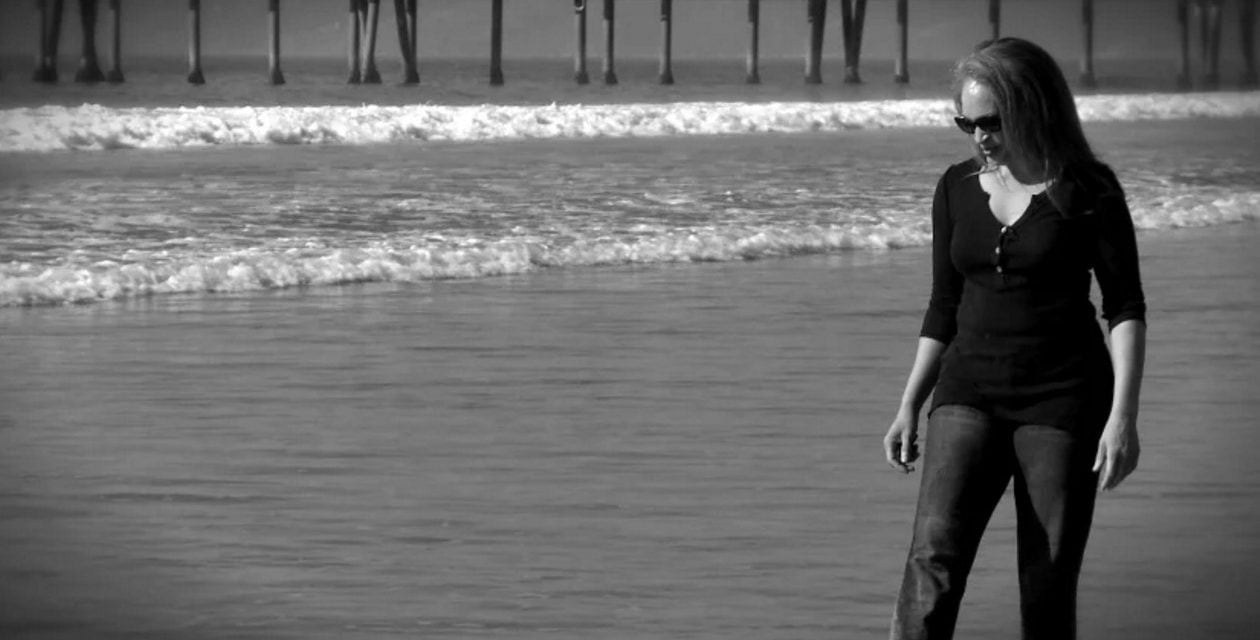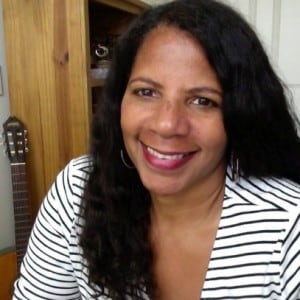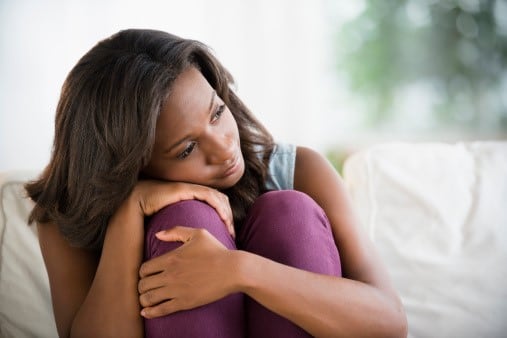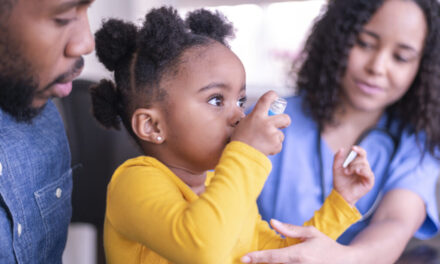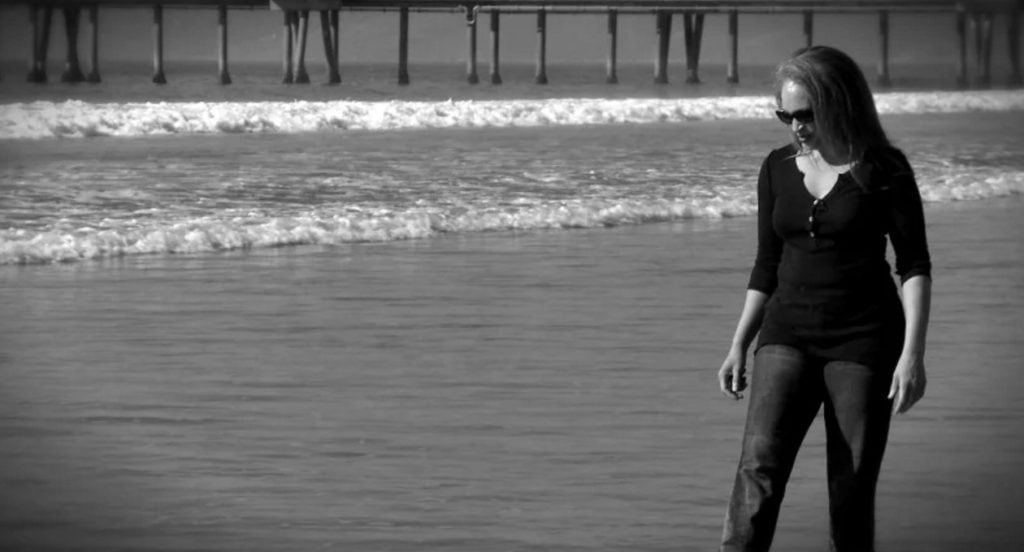
Bridget Gordon shares the highs and lows of living with HIV in “Women at Risk.” (Photo: Valerie Cummings)
HIV was the farthest thing from Bridget Gordon’s mind. Like many women, she never believed that she would become infected with the virus that causes AIDS.
“I really didn’t feel like I fell into a high-risk classification,” Gordon said. “I wasn’t promiscuous, doing IV drugs or dating people that were having sex with men — or so I thought.”
Gordon shares her storybook wedding and how HIV changed her life in the new documentary “Women at Risk: Black Women and the HIV/AIDS Epidemic.” She is one of 1.2 million people living with HIV in the United States. Unlike Gordon, 1 in 8 of these individuals have no idea that they are infected, according to the Centers for Disease Control.
Such “startling statistics” inspired Valerie Cummings to film an overview on AIDS in the black community. “Then I started seeing the numbers for women, and I was just dumbfounded.” The stats on women made Cummings sharpen her focus.
Cummings and others are trying to increase awareness not only today for World AIDS Day, but throughout the year. Her documentary will be featured on PBS, airing at 9 p.m. today and 1 a.m. tomorrow, as well as Thursday and Saturday, on WHUT in Washington, D.C.
The HIV rate for African-American women is about three and a half times the rate for white women, accounting for 63 percent of HIV/AIDS diagnoses among all women in 2013, reports amfAR, The Foundation for AIDS Research. (Also see good news on how infection rates are dropping and what you can do to protect yourself, below.)
“What surprised me was some of the other factors that come into play,” Cummings recalled. In addition to issues of poverty and access to adequate health care, she found some of these factors disheartening:
- the role of abuse
- the high prevalence of low self-esteem
- how black women are valued
- the ratio of black men to women in certain areas
- the impact of incarceration and
- the challenges of finding and maintaining committed, monogamous relationships.
 The “Women at Risk” documentary has drawn praise from coast to coast, ranging from Celia J. Maxwell, M.D., assistant vice president for Health Sciences and director of the Women’s Health Institute at Howard University, where she participated in a discussion following a screening there, and Mark Ridley-Thomas, supervisor of the Second District of the County of Los Angeles, who hosted a screening at Charles Drew University.
The “Women at Risk” documentary has drawn praise from coast to coast, ranging from Celia J. Maxwell, M.D., assistant vice president for Health Sciences and director of the Women’s Health Institute at Howard University, where she participated in a discussion following a screening there, and Mark Ridley-Thomas, supervisor of the Second District of the County of Los Angeles, who hosted a screening at Charles Drew University.
Cummings welcomes the positive response. Her goal is to empower women while focusing more attention on the role of heterosexual men. “That’s a conversation I want to get going, because we don’t talk about that. There isn’t a lot of messaging toward heterosexual men.”
“The Charlie Sheen thing has opened the door a bit,” she says, referring to the actor’s admission that he is HIV positive.
“I really hope that this documentary encourages black men to take responsibility and be part of the conversation and that it encourages black women to value themselves and to take care of themselves,” Cummings said.
“We do a lot of things in the name of love in relationships, and I hope this makes them think about that.”
Yanick Rice Lamb, who teaches journalism at Howard University, is co-founder of FierceforBlackWomen.com.
Women At Risk Sneak Peek from srbfrancois on Vimeo.
Don’t Despair; Take Care
You can protect yourself from HIV/AIDS — and safeguard your health if you have been infected, (ThinkStock by Getty Images)
HIV medications are more effective than ever before and prevention is advancing dramatically through treatments like Pre-exposure prophylaxis, or PrEP, that can protect you in high-risk situations. And condoms are still and excellent and important defense. Don’t despair; take care. You can protect yourself from HIV/AIDS — and safeguard your health if you have been infected. Learn more about getting tested and protecting yourself.
President Obama’s Action Plan
For World AIDS Day, the White House is releasing a federal action plan to implement the recently updated National HIV/AIDS Strategy.
Good News on HIV
The good news is that infection rates are dropping for black women, but we still need to be careful. Learn more in “Dropping Your Aids Risk” by Dazon Dixon Diallo, M.P.H., president and CEO of SisterLove Inc. Since 1989, the Atlanta-based organization has fought against the threat of HIV/AIDS among women through education and advocacy for better prevention, treatment and care. Also see “Great News — HIV/AIDS Rate Down in Black Women and Men.”
More From Your Sisters
Black women share their stories through the CDC’s “Let’s Stop HIV Together” campaign.
“The Time to Act Is Now!”
That’s the theme of this year’s observance of World AIDS Day. Learn more and find out how you can make a difference.
— From Fierce Black Women

